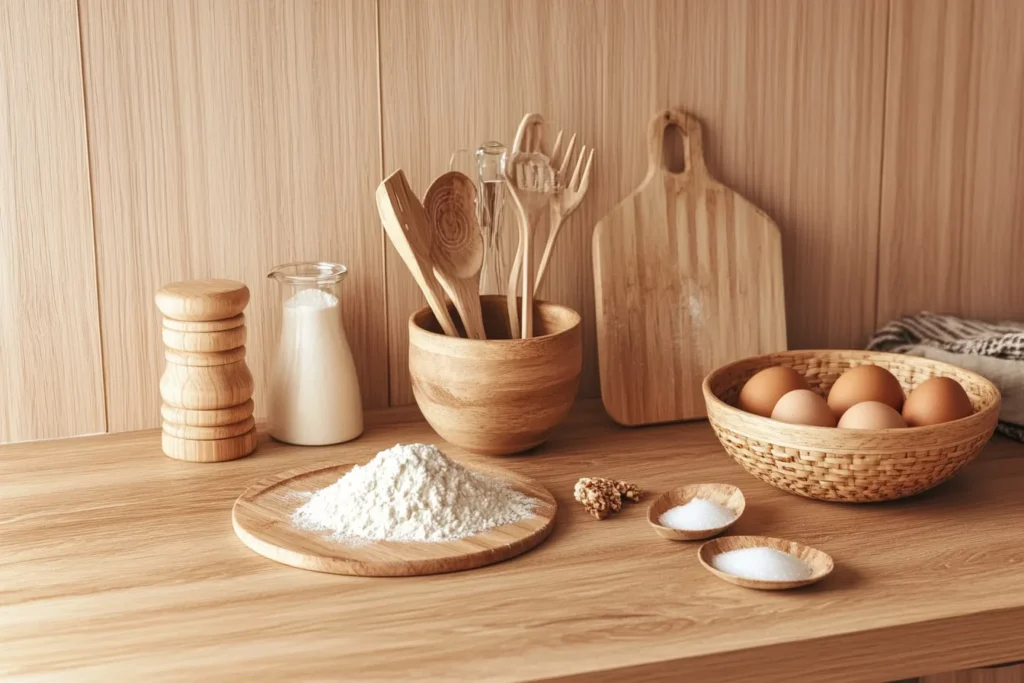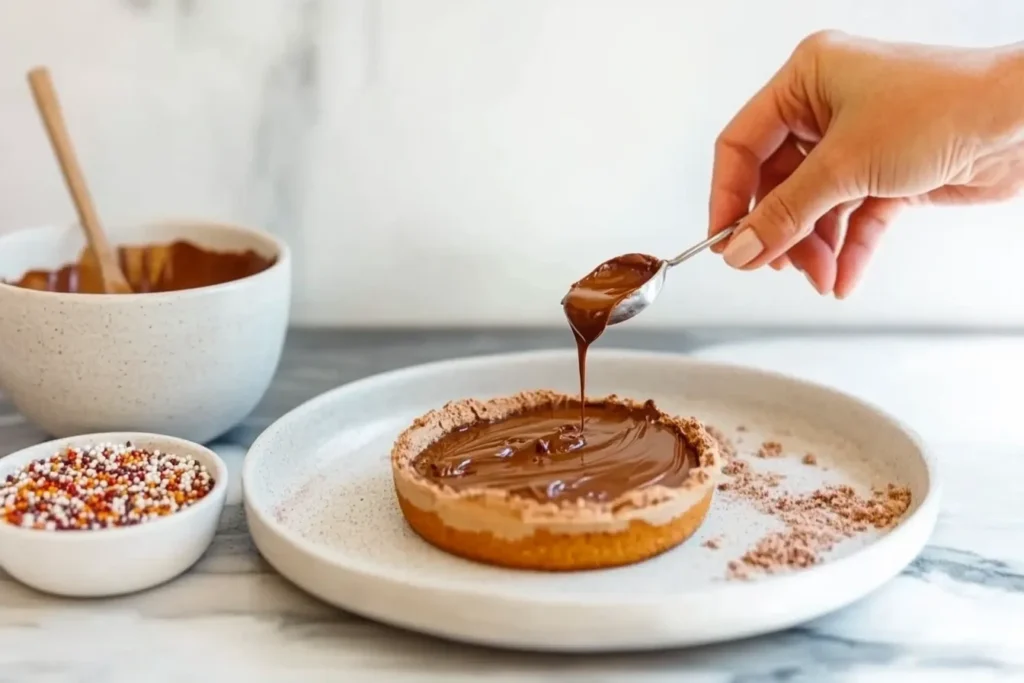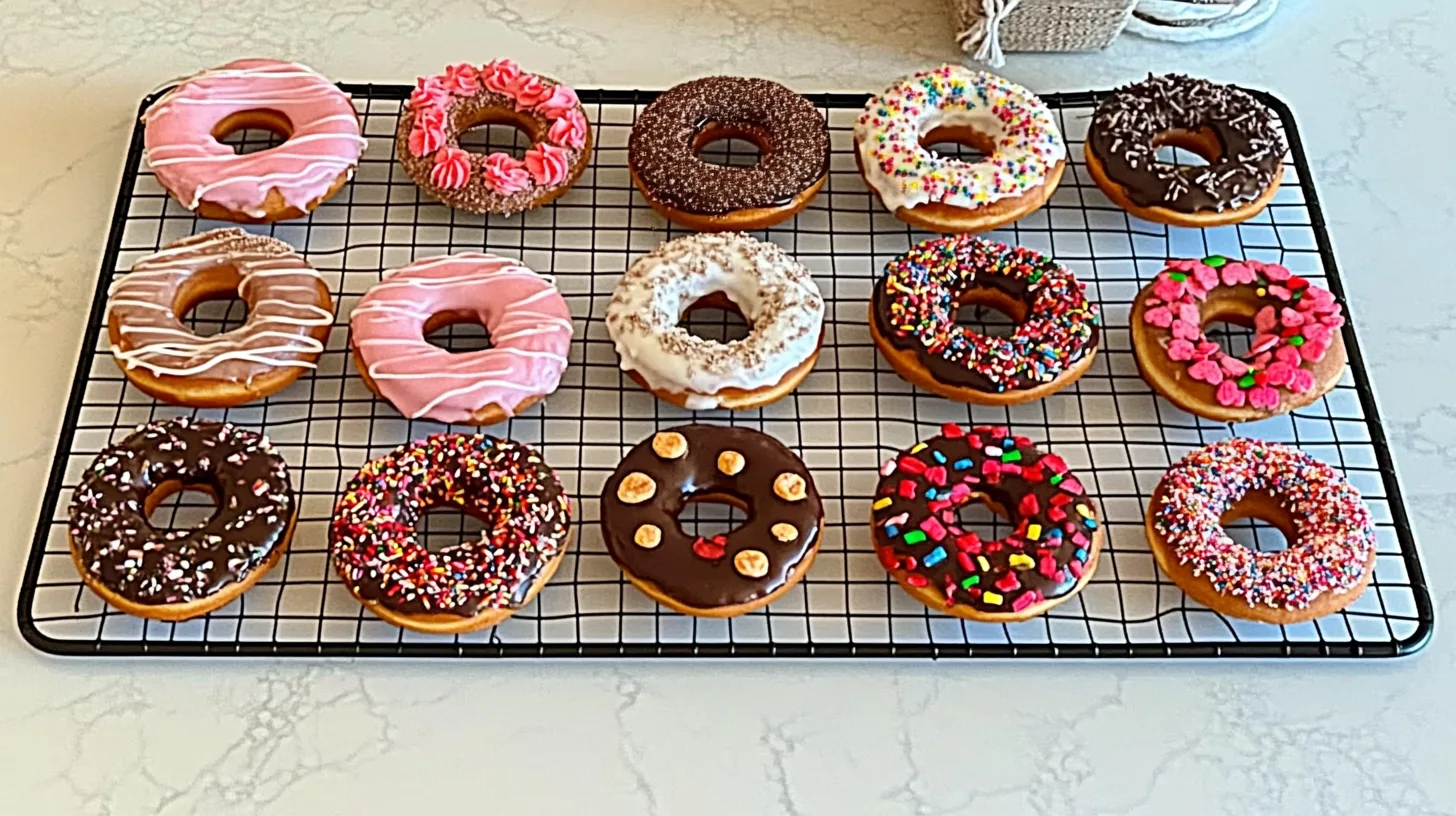Discover a fun and easy way to bake a delightful donut cake. Enjoy a sweet twist on a classic dessert that’s perfect for every occasion.
Welcome to a world of sugary indulgence. This guide explores everything you need to craft the best donut cake imaginable. You will learn how to select ingredients, use the right equipment, and avoid common baking mistakes. Furthermore, you will discover how to decorate and present your masterpiece to impress friends and family. Let’s dive straight into the captivating journey of making a delicious treat that merges the fun shape of a donut with the rich taste of cake.
Donut Cake: Introduction and Origins
A donut cake combines two beloved confections into one irresistible dessert. It takes the whimsy of a fried donut and merges it with the rich, fluffy layers of cake. Comparatively, donut-style cakes have fewer complicated steps than you might expect. Essentially, bakers prepare a traditional cake batter but use a donut-shaped pan for baking. Sometimes, they add a bit of donut flair by using nutmeg or a yeast-based dough. However, the fundamental concept is simple: it’s a playful dessert that turns heads at gatherings.
Historically, donuts themselves date back centuries. They were first popularized in the United States through European immigrants’ recipes. Eventually, someone decided to adapt these baked or fried delights into a cake form. Indeed, the donut’s iconic ring shape inspired bakers to innovate. Thus, the donut cake emerged as a novel treat, especially at children’s parties. Its unique shape and glazes add visual appeal. Consequently, it has become a sought-after choice for birthdays, brunches, and holiday celebrations.
Altogether, the donut-style approach offers more than a typical round cake. Its ring shape allows for even cooking and ensures that each slice has ample topping. Because of this balanced texture, the donut cake has become a go-to treat for sweet lovers everywhere. Another advantage is that you can easily slice it into uniform pieces. Guests will appreciate the neat presentation. Undoubtedly, this dessert style provides a memorable centerpiece for any table.
Key Ingredients for the Perfect Donut Cake

Crafting a perfect donut cake depends chiefly on high-quality ingredients. Generally, you need standard cake components like flour, sugar, baking powder, and salt. However, choosing the best flour can substantially affect the final texture. Cake flour results in a lighter crumb, while all-purpose flour creates a slightly denser bite. Equally important, you must measure your flour accurately. Too much flour leads to dryness, and too little flour risks a gooey interior.
When selecting sweeteners, you have a few options. Basically, granulated sugar works best in most cases. Nonetheless, you can experiment with brown sugar if you want a richer flavor. Because it contains molasses, brown sugar yields a deeper taste. Another alternative is coconut sugar, which offers a mild caramel-like essence. Regardless of your choice, sugar not only provides sweetness but also contributes to a moist texture.
Adding some liquid elements is vital for your cake’s consistency. Milk or buttermilk helps create a tender crumb, whereas almond milk or oat milk can replace dairy for those with special diets. Meanwhile, eggs provide structure and bind the batter. If you prefer an egg-free version, you can try applesauce or flaxseed gel as a substitute. Additionally, a bit of melted butter or vegetable oil is necessary for moisture and richness. Vanilla extract also adds a pleasant aroma, although you can explore other flavor extracts like almond or citrus for a unique spin.
Spices like nutmeg and cinnamon sometimes show up in donut-inspired desserts. These spices mimic the classic taste of donuts. Furthermore, a pinch of salt balances out all the sweetness. Consequently, the interplay of sweet and savory flavors is critical for achieving a standout taste. In short, do not skip the salt. It highlights every other element in the batter.
Finally, consider any add-ins, like chocolate chips or sprinkles. Sprinkles can provide color, while chocolate chips offer bursts of flavor. If you aim for a fruit-based twist, small bits of fresh berries or dried fruit also work. Basically, feel free to customize as you see fit. Above all, maintaining the right ratio of dry to wet ingredients is paramount. This ensures that your donut cake remains fluffy and not overly dense.
Baking Methods for a Fluffy Donut Cake
Perfecting a fluffy donut cake hinges on proper technique. Initially, you should preheat your oven and prepare your donut-shaped pan. Generally, a temperature around 350°F (175°C) works well for most recipes. Furthermore, greasing the pan is crucial. You can use butter or a non-stick spray to ensure an easy release.
Because baking times vary, keep a close eye on your cake. Typically, a medium-sized ring cake might take around 25 to 35 minutes. However, every oven is different. Test your cake’s doneness by inserting a toothpick into the thickest part. If it comes out clean or with a few crumbs, it’s done. Conversely, wet batter on the toothpick means it needs more time. Always err on the side of caution. Overbaking leads to dryness, a common pitfall for donut cakes.
Mixing technique also matters. Overmixing can result in a tough texture. Therefore, you should stir your batter until just combined. Gently fold in any add-ins if your recipe calls for them. Additionally, watch for lumps. While a few small lumps are acceptable, large clumps of flour can remain uncooked in the final product. A few quick stirs should eliminate most lumps without toughening the batter.
Shaping the Donut Cake Batter
Shaping the donut cake batter requires a pan designed to resemble a donut’s ring. Fill each mold about two-thirds full, because the batter needs room to rise. If you’re using a single large ring mold, ensure the center post is well-greased. Meanwhile, use a rubber spatula to spread the batter evenly. This helps achieve a uniform shape and prevents lopsided results.
Eventually, you might consider tapping the pan gently on your countertop. This knocks out any trapped air bubbles that can create holes in your cake. Accordingly, smooth out the top before placing it into the oven. Once baked, let your donut cake rest in the pan for about five minutes. Then invert it onto a cooling rack to finish cooling. This step helps retain the clean ring outline that makes the dessert so appealing.
Equipment and Tools
While not labeled with the focus keyword in its heading, this section remains integral to your success. Basically, you need a mixing bowl, whisk, spatula, and measuring cups. A stand mixer or hand mixer can simplify the process, though it isn’t mandatory. Because accuracy is crucial, a kitchen scale is often recommended. It prevents under-measuring or over-measuring critical ingredients like flour and sugar.
Donut pans come in various sizes. Some have multiple small donut molds, while others provide one large ring. If you prefer a classic ring shape, invest in a sturdy Bundt pan or a specialized donut cake mold. Bundt pans add decorative patterns to the cake’s exterior, which can look spectacular once it’s glazed. Moreover, ensure you have a wire rack for cooling. Placing a warm cake on a flat surface can trap moisture and ruin its texture.
Occasionally, people wonder if they can fry the batter. Yet, a typical donut cake batter is more akin to standard cake batter than yeast dough. Consequently, it’s not suited for deep-frying. You might attempt a hybrid method if you adapt a yeast-based dough. Nonetheless, for a straightforward approach, the oven is the best choice. Finally, keep a toothpick or cake tester handy. This small tool will confirm when your cake is perfectly baked.
Decorating and Serving Ideas

Decorating a donut cake can be as easy or intricate as you like. Some individuals keep it simple with a thin sugar glaze. Others indulge in thick frosting and colorful sprinkles. Indeed, toppings allow you to customize for various occasions. For example, fresh fruit and whipped cream can transform a plain vanilla cake into an elegant dessert. Conversely, a drizzle of chocolate ganache over a chocolate-flavored donut cake provides a lavish finish.
For special events, you can color-coordinate icings and sprinkles. Weddings might call for white or pastel icing, whereas birthday celebrations might favor bright neon shades. Meanwhile, edible glitter or metallic sprinkles can elevate the cake’s visual appeal. Essentially, this dessert becomes both a centerpiece and a conversation starter. Another popular option includes adding a ring of mini donuts on top for extra flair.
Frosting Ideas for Your Donut Cake
- Classic Sugar Glaze: Mix powdered sugar, milk, and a drop of vanilla extract. Pour it over the cake while it’s still slightly warm.
- Chocolate Ganache: Melt semi-sweet chocolate chips with heavy cream. Let it cool, then drizzle over the cake for a rich taste.
- Cream Cheese Frosting: Whip together softened cream cheese, butter, powdered sugar, and vanilla. It pairs especially well with red velvet or carrot-based donut cakes.
- Fruit Glaze: Blend fresh berries with powdered sugar and lemon juice. Strain out the seeds before drizzling for a vibrant color and tangy flavor.
Equally important, consider how you serve your creation. Slicing the donut cake into wedges helps maintain its ring shape. Pair each slice with coffee or tea for a simple treat. Because donut cakes look impressive on a cake stand, this approach can also enhance your presentation. Ultimately, you have countless ways to style and serve your donut cake.
Variations and Special Diet Options
One of the joys of making a donut cake is the versatility. You can adapt the base recipe to fit any preference. If you’re a fan of classic flavors, a vanilla-based donut cake with a light sugar glaze might suit you. However, chocolate lovers can opt for cocoa-infused batter and a matching chocolate glaze. Another popular route is funfetti, which incorporates rainbow sprinkles inside the batter for a colorful surprise.
For those adhering to specific diets, a vegan or gluten-free version is possible. Use plant-based milk, an egg replacer, and non-dairy butter. Equally, choose gluten-free flour blends crafted for baking. They often contain xanthan gum or similar binding agents. Because these blends vary by brand, follow the manufacturer’s recommendations for best results. Additionally, watch the baking time, as gluten-free batters sometimes require slight adjustments.
Seasonal flavors can add excitement throughout the year. Around autumn, you might include pumpkin puree and warm spices like cinnamon, nutmeg, and ginger. In the spring, a lemon donut cake with lemon zest in the glaze can taste refreshing. Consequently, each season offers a new way to enjoy this dessert. Essentially, you can experiment with any flavor profile that suits your cravings.
Beyond flavor, you can also modify the texture. If you crave a denser crumb, use sour cream or Greek yogurt. Conversely, a dash of lemon juice or apple cider vinegar can lift the batter for a fluffier result. Ultimately, customizing the recipe ensures you never grow tired of the same old version.
Troubleshooting Common Problems
Even experienced bakers face a few hurdles. Nevertheless, understanding why something went wrong can help you fix it the next time. One frequent issue is over-browning or burnt edges. This can happen if your oven runs hot or if you leave the cake in for too long. Check your oven’s accuracy with a thermometer. Moreover, set a timer and keep a close watch. A slightly golden top is ideal, but a dark crust indicates overbaking.
Another problem is a dense or heavy interior. Often, this results from overmixing. Because gluten forms when you combine flour with liquid, excessive stirring can produce a chewy texture. Thus, mix gently until the ingredients come together. If dryness plagues your donut cake, evaluate your flour measuring technique. Scoop-and-level is more accurate than dipping the measuring cup into the flour bag. Additionally, consider adding an extra tablespoon of butter or oil next time.
Off-flavors or lackluster taste can stem from old baking powder, flavor extracts, or stale spices. Always check expiration dates. Meanwhile, too much or too little salt can throw off the flavor balance. Chiefly, salt brings out sweetness. When absent, desserts taste one-dimensional. Conversely, too much salt can overwhelm subtle notes of vanilla or chocolate.
If your cake crumbles when slicing, it might be underbaked or still warm. Let your donut cake cool fully before cutting into it. This step is crucial, especially for ring-shaped cakes. Altogether, a few minor tweaks in technique or ingredient ratios can solve most baking woes. No matter your skill level, a bit of patience goes a long way in perfecting this dessert.
FAQ Section
Below are the most common questions people ask about creating and enjoying a donut cake. Each answer will guide you to a seamless baking experience.
- Can you make a cake out of donuts?
Yes, you can. Typically, you arrange store-bought donuts in layers, binding them with frosting. This method creates a quick “cake” that looks festive. However, many prefer baking a dedicated donut cake batter in a ring-shaped pan for a more cohesive dessert. - How many donuts do you need for a donut cake?
If you’re stacking regular donuts, the number depends on the desired height. Often, between 10 to 15 donuts will form a modest cake. Nonetheless, if you opt to bake a large ring cake, you only need the batter for one circular mold rather than multiple donuts. - Does Dunkin donuts have a donut cake?
Dunkin’ sells a variety of donuts, but an official donut cake is not typically on their menu. Sometimes, you may see special limited-edition items or large donut-shaped treats. However, a fully assembled ring cake is less common. You can request custom orders in certain cases, though availability varies by location. - Does Krispy Kreme make a cake donut?
Indeed, Krispy Kreme offers a classic cake donut option, often glazed or frosted. This is distinct from their original yeast donut, which is light and airy. The cake donut at Krispy Kreme has a denser texture. You won’t find a full donut cake there, but they do sell a single-serving cake donut that’s just as tasty.
Storage Tips for Leftover Donut Cake
Storing your leftover donut cake requires minimal effort. First, let the cake cool completely. Then wrap it in plastic wrap or place it in an airtight container. Refrigeration is optional, but it can help preserve freshness for up to five days. If you plan to store it longer, freeze individual slices. Wrap them in parchment paper and a layer of aluminum foil. This approach prevents ice crystals from forming. When you’re ready to eat, thaw slices in the refrigerator overnight, or leave them on the counter for about 30 minutes.
Conclusion
In conclusion, the donut cake is a brilliant fusion of two popular desserts: donuts and cakes. It offers a playful shape, a moist crumb, and endless opportunities for personal touches. Moreover, you can experiment with flavor extracts, icings, and decorative toppings. Whether you prefer a straightforward vanilla base or an elaborate chocolate creation, this dessert never fails to delight.
Chiefly, the simplicity of the ring shape appeals to both amateur and seasoned bakers. Consequently, you can expect your guests to gather around the table for a slice. Because donut cakes can adapt to any occasion, they are a favorite for birthdays, anniversaries, and holiday gatherings. Indeed, your imagination is the only limit to making this dessert stand out.
Altogether, a donut cake is not only delicious but also memorable. From the fluffy interior to the decorative glaze, every bite delivers a sweet joy. Furthermore, variations abound, so you can swap ingredients to fit dietary needs. Whether you enjoy your creation plain or with layers of frosting, this dessert is unquestionably worthy of a spot in your baking repertoire. Take the leap and craft your own ring-shaped masterpiece. Your friends and family will thank you for it.
FOR MORE DELICIUOS RECIPES:

